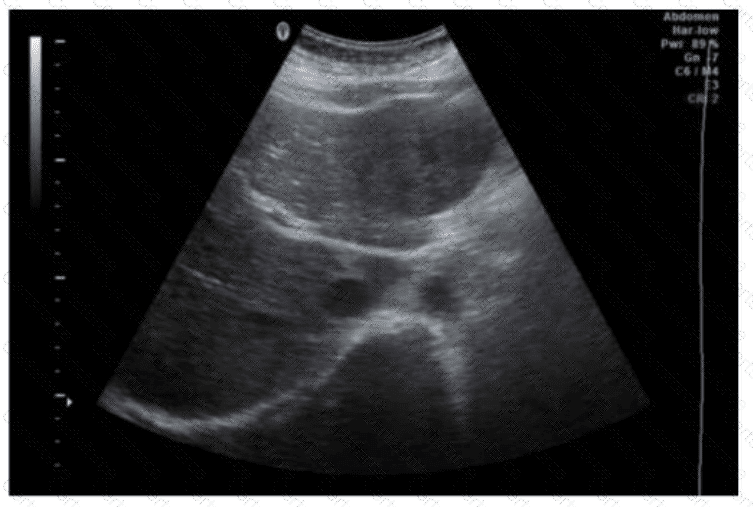The transverse ultrasound image of the liver shows a solid, hypoechoic mass located in the posterior aspect of the right lobe of the liver. In this view:
The anterior aspect of the liver is at the top of the image (near the transducer).
The posterior aspect is at the bottom (deeper).
The right lobe occupies the majority of the screen on transverse imaging when the probe is placed in the epigastrium or right upper quadrant.
Anatomically, the right lobe of the liver is divided into anterior and posterior segments by the right hepatic vein in the coronal plane. In transverse imaging:
The right anterior segment lies closer to the anterior abdominal wall.
The right posterior segment lies deeper (posteriorly).
Given that the mass is seen deep within the liver on the right side of the image, it is best localized to the right posterior segment (Segment VI or VII depending on the exact craniocaudal level).
Comparison of answer choices:
A. Left lateral is located far to the left of the image and typically appears higher and more anterior on transverse scans.
B. Left medial lies near the midline and would appear adjacent to the ligamentum teres or falciform ligament.
C. Right anterior lies closer to the transducer (top of the image), not posteriorly.
D. Right posterior — Correct. This is the segment shown deep in the right lobe of the liver.
[References:, Couinaud C. Liver anatomy: portal (and hepatic) segmentation. Trans Assoc Am Physicians. 1957., Rumack CM, Wilson SR, Charboneau JW, Levine D. Diagnostic Ultrasound, 5th ed. Elsevier; 2017., Hagen-Ansert SL. Textbook of Diagnostic Sonography, 8th ed. Elsevier; 2017., , ]

Submit